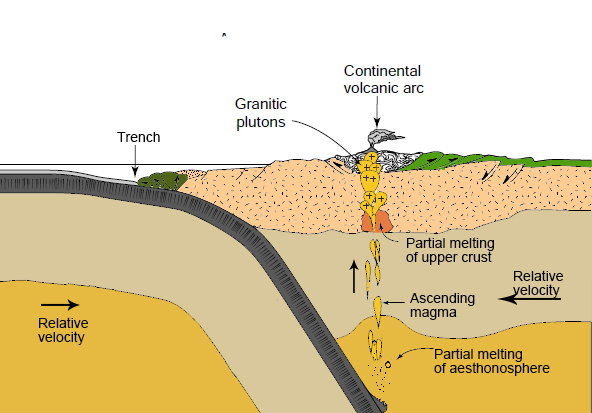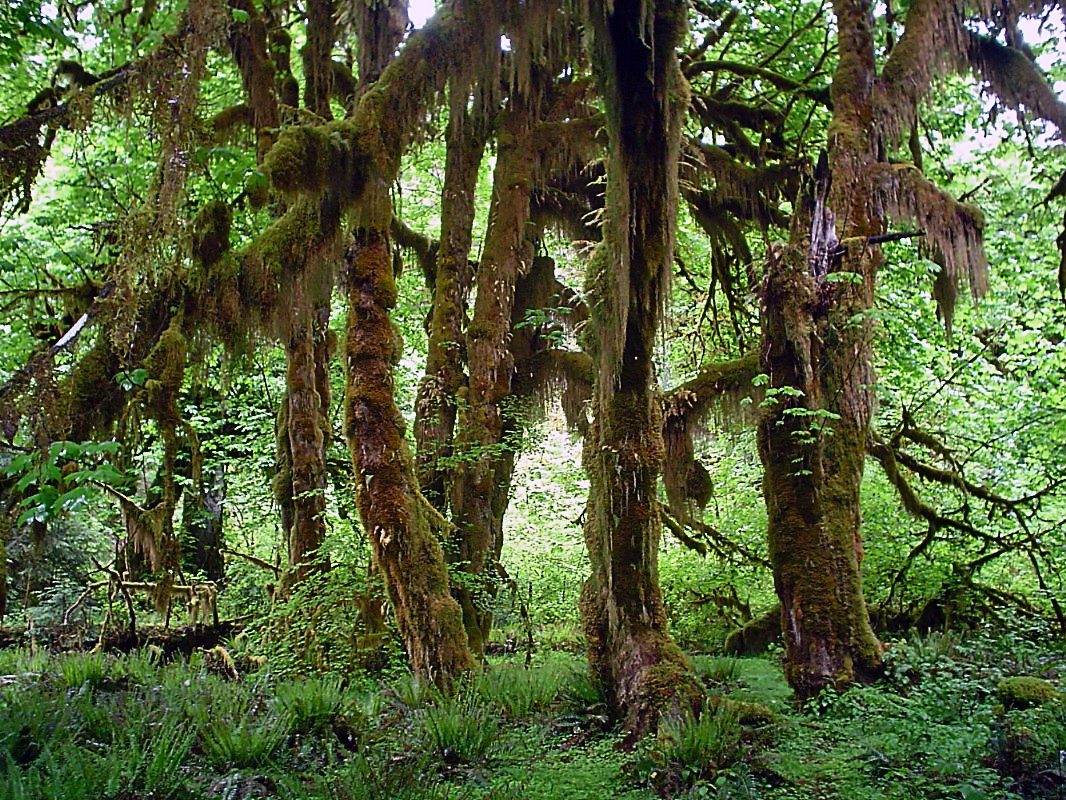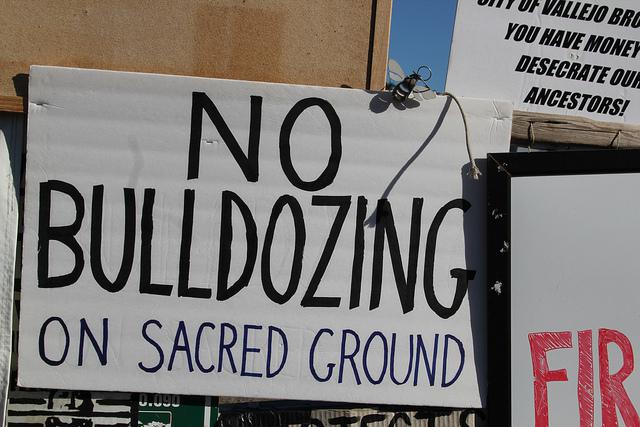|
Tamanowas Rock
Tamanowas Rock ( clm, t̕əménəwəs) (also spelled Tamanous), also called Chimacum Rock, is a high rock with caves and crevices that lies in a forest adjacent to Anderson Lake State Park, near Port Townsend, Washington. It is a sacred site to the Coast Salish peoples of the Pacific Northwest and a pilgrimage site. The rock was listed on the National Register of Historic Places in 2015.. History Tamanowas Rock is said to have first been used 10,000 years ago by the Chimakum (or Chemacum) people,leading to its alternate name "Chimacum Rock", whose name is also found in other local geographic features. In accordance with legend, it may have been used as a refuge from the tsunami caused by the 1700 Cascadia earthquake, and earlier as a lookout for hunting now-extinct mastodon. "Tamanowas" means " spirit power" in the Klallam language. Preservation The site is either a registered archaeological site, or nominated to become one with the Washington State Department of Archaeology. I ... [...More Info...] [...Related Items...] OR: [Wikipedia] [Google] [Baidu] |
Olympic Mountains
The Olympic Mountains are a mountain range on the Olympic Peninsula of the Pacific Northwest of the United States. The mountains, part of the Pacific Coast Ranges, are not especially high – Mount Olympus is the highest at ; however, the eastern slopes rise out of Puget Sound from sea level and the western slopes are separated from the Pacific Ocean by the low-lying wide Pacific Ocean coastal plain. The western slopes are the wettest place in the 48 contiguous states. Most of the mountains are protected within the bounds of Olympic National Park and adjoining segments of the Olympic National Forest. The mountains are located in western Washington in the United States, spread out across four counties: Clallam, Grays Harbor, Jefferson and Mason. Physiographically, they are a section of the larger Pacific Border province, which is in turn a part of the larger Pacific Mountain System. Geography The Olympics have the form of a cluster of steep-sided peaks surrounded by heavily ... [...More Info...] [...Related Items...] OR: [Wikipedia] [Google] [Baidu] |
Washington State Parks
The Washington State Park System is a set of State park, state parks owned by the state government of Washington (state), Washington, United States, USA. They are managed by the Washington State Parks and Recreation Commission. There are over 140 parks throughout the state, including 19 Marine park, marine parks and 11 Historical Parks. The park system was established in 1913 by the creation of the Washington State Board of Park Commissioners. The first two parks were formed from donated land in 1915, and by 1929 the state had seven parks. In 1947 the State Parks Committee was renamed to the Washington State Parks and Recreation Commission and given authority to oversee the state park system. By 1960 the number of state parks had increased to 130. In 2003, the Washington State Legislature introduced a $5-a-day parking fee, meant to fund park-related construction projects; more than a quarter of the fees collected went into the fee-collection system itself. Park use decreased more t ... [...More Info...] [...Related Items...] OR: [Wikipedia] [Google] [Baidu] |
The Evergreen State College
The Evergreen State College is a public liberal arts college in Olympia, Washington. Founded in 1967, it offers a non-traditional undergraduate curriculum in which students have the option to design their own study towards a degree or follow a pre-determined path of study. Full-time students can enroll in interdisciplinary academic programs, in addition to stand-alone classes. Programs typically offer students the opportunity to study several disciplines in a coordinated manner. Faculty write substantive narrative evaluations of students' work in place of issuing grades. Evergreen's main campus, which includes its own saltwater beach, spans 1,000 acres of forest close to the southern end of the Puget Sound. Evergreen also has a satellite campus in nearby Tacoma. The school offers a Bachelor of Arts in Liberal Arts and Bachelor of Science, Master of Environmental Studies, Master in Teaching, Master of Public Administration, and Master of Public Administration in Tribal Governanc ... [...More Info...] [...Related Items...] OR: [Wikipedia] [Google] [Baidu] |
The Oregonian
''The Oregonian'' is a daily newspaper based in Portland, Oregon, United States, owned by Advance Publications. It is the oldest continuously published newspaper on the U.S. west coast, founded as a weekly by Thomas J. Dryer on December 4, 1850, and published daily since 1861. It is the largest newspaper in Oregon and the second largest in the Pacific Northwest by circulation. It is one of the few newspapers with a statewide focus in the United States. The Sunday edition is published under the title ''The Sunday Oregonian''. The regular edition was published under the title ''The Morning Oregonian'' from 1861 until 1937. ''The Oregonian'' received the 2001 Pulitzer Prize for Public Service, the only gold medal annually awarded by the organization. The paper's staff or individual writers have received seven other Pulitzer Prizes, most recently the award for Editorial Writing in 2014. ''The Oregonian'' is home-delivered throughout Multnomah, Washington, Clackamas, and Yamhill ... [...More Info...] [...Related Items...] OR: [Wikipedia] [Google] [Baidu] |
Recognition Of Native American Sacred Sites In The United States
The Recognition of Native American sacred sites in the United States could be described as "specific, discrete, narrowly delineated location on Federal land that is identified by an Indian tribe, or Indian individual determined to be an appropriately authoritative representative of an Indian religion, as sacred by virtue of its established religious significance to, or ceremonial use by, an Indian religion". The sacred places are believed to "have their own 'spiritual properties and significance'". Ultimately, Indigenous peoples who practice their religion at a particular site, they hold a special and sacred attachment to that land sacred land. Among multiple issues regarding the human rights of Indigenous Peoples is the protection of these sacred sites. During colonization, Europeans claimed governance over the lands of numerous native tribes. After decolonization, Indigenous groups still fought federal governments to regain ownership of their ancestral lands, including the sacre ... [...More Info...] [...Related Items...] OR: [Wikipedia] [Google] [Baidu] |
National Register Of Historic Places Listings In Jefferson County, Washington ...
Current listings Former listings References {{NRWAextlinks, Jefferson Jefferson Jefferson may refer to: Names * Jefferson (surname) * Jefferson (given name) People * Thomas Jefferson (1743–1826), third president of the United States * Jefferson (footballer, born 1970), full name Jefferson Tomaz de Souza, Brazilian foo ... [...More Info...] [...Related Items...] OR: [Wikipedia] [Google] [Baidu] |
Puget Sound Faults
File:Puget Sound faults.png, upright=1.34, The principal Puget Sound faults (approximate location of known extents) and other selected peripheral and minor faults. Southern tip of Vancouver Island and San Juan Islands at top left (faults not shown), Olympic Mountains at center left, Mount Rainier at lower right (near WRZ). Faults north to south: Devils Mountain, Utsalady Point, Strawberry Point, Mount Vernon Fault/Granite Falls FZ/Woods Creek, Monroe Fault, Little River, Sequim, Southern Whidbey Island Fault, Cherry Creek, Tokul Creek, Rattlesnake Mountain Fault Zone, Lofall, Canyon River, Frigid Creek, Saddle Mountain faults, Hood Canal, Dabob Bay, Seattle Fault Zone, Dewatto Lineament, Tacoma Fault Zone, East Passage, White River (extends east), Olympia Structure, Scammon Creek, Doty (extends west), Western Rainier Zone, Saint Helens Zone (extends south). Also shown: Victoria (V), part of the Leech River Fault (unlabeled), and part of the Olympic–Wallo ... [...More Info...] [...Related Items...] OR: [Wikipedia] [Google] [Baidu] |
Volcanic Arc
A volcanic arc (also known as a magmatic arc) is a belt of volcanoes formed above a subducting oceanic tectonic plate, with the belt arranged in an arc shape as seen from above. Volcanic arcs typically parallel an oceanic trench, with the arc located further from the subducting plate than the trench. The oceanic plate is saturated with water, mostly in the form of hydrous minerals such as micas, amphiboles, and serpentine minerals. As the oceanic plate is subducted, it is subjected to increasing pressure and temperature with increasing depth. The heat and pressure break down the hydrous minerals in the plate, releasing water into the overlying mantle. Volatiles such as water drastically lower the melting point of the mantle, causing some of the mantle to melt and form magma at depth under the overriding plate. The magma ascends to form an arc of volcanoes parallel to the subduction zone. Volcanic arcs are distinct from volcanic chains formed over hotspots in the middle of a te ... [...More Info...] [...Related Items...] OR: [Wikipedia] [Google] [Baidu] |
Kula-Farallon Ridge
The Kula-Farallon Ridge was an ancient mid-ocean ridge that existed between the Kula and Farallon plates in the Pacific Ocean during the Jurassic period. There was a small piece of this ridge off the Pacific Northwest 43 million years ago. The rest of the ridge has since been subducted beneath Alaska. In its early stages of development, the Kula-Farallon Ridge sheared pieces of oceanic rock off the coast of California. When the Kula–Farallon Ridge was in the area where Washington and Oregon are now, basaltic lava erupted there. Some of the basaltic lava is now part of the Olympic Peninsula. See also * Hawaiian-Emperor seamount chain * Meiji Seamount Meiji Seamount, named after Emperor Meiji, the 122nd Emperor of Japan, is the oldest seamount in the Hawaiian-Emperor seamount chain, with an estimated age of 82 million years. It lies at the northernmost end of the chain, and is perched at the ... ReferencesThe Coast Range Episode (115 to 57 million years ago) Underw ... [...More Info...] [...Related Items...] OR: [Wikipedia] [Google] [Baidu] |
Blue Hills (Washington)
The Blue Hills just west of Bremerton, Washington, also called the Bremerton Hills, Bald Hills, and Wildcat Hills, consist of Gold Mountain, Green Mountain, and several informally named hills. Reaching an elevation of 1761 feet (537 meters), a thousand feet above the glacial till that fills the Puget Lowland, they form a prominent landmark visible around the region. They are formed of uplifted blocks of marine basalts, the steep-walled canyons between the various summits being the fissures between the blocks (particularly prominent at Gold Creek and Union River). In addition to Gold Mountain and Green Mountain (the named members of the Blue Hills) are several other prominent peaks unofficially named according to their elevation (in feet): * Kitsap Lookout, el. 1,360 feet * (also known as Peak 1320), * Peak 1291. * Peak 730. For a more complete list of hills see List of mountains and hills of Kitsap County, Washington. The name "Blue Hills" is said to come from the gree ... [...More Info...] [...Related Items...] OR: [Wikipedia] [Google] [Baidu] |
Breccia
Breccia () is a rock composed of large angular broken fragments of minerals or rocks cemented together by a fine-grained matrix. The word has its origins in the Italian language, in which it means "rubble". A breccia may have a variety of different origins, as indicated by the named types including sedimentary breccia, tectonic breccia, igneous breccia, impact breccia, and hydrothermal breccia. A megabreccia is a breccia composed of very large rock fragments, sometimes kilometers across, which can be formed by landslides, impact events, or caldera collapse. Types Breccia is composed of coarse rock fragments held together by cement or a fine-grained matrix. Like conglomerate, breccia contains at least 30 percent of gravel-sized particles (particles over 2mm in size), but it is distinguished from conglomerate because the rock fragments have sharp edges that have not been worn down. These indicate that the gravel was deposited very close to its source area, since otherwise th ... [...More Info...] [...Related Items...] OR: [Wikipedia] [Google] [Baidu] |
Adakite
Adakites are volcanic rocks of intermediate to felsic composition that have geochemical characteristics of magma originally thought to have formed by partial melting of altered basalt that is subducted below volcanic arcs. Most magmas derived in subduction zones come from the mantle above the subducting plate when hydrous fluids are released from minerals that break down in the metamorphosed basalt, rise into the mantle, and initiate partial melting. However, Defant and Drummond recognized that when young oceanic crust (less than 25 million years old) is subducted, adakites are typically produced in the arc. They postulated that when young oceanic crust is subducted it is "warmer" (closer to the mid-ocean ridge where it formed) than crust that is typically subducted. The warmer crust enables melting of the metamorphosed subducted basalt rather than the mantle above. Experimental work by several researchers has verified the geochemical characteristics of "slab melts" and the c ... [...More Info...] [...Related Items...] OR: [Wikipedia] [Google] [Baidu] |








